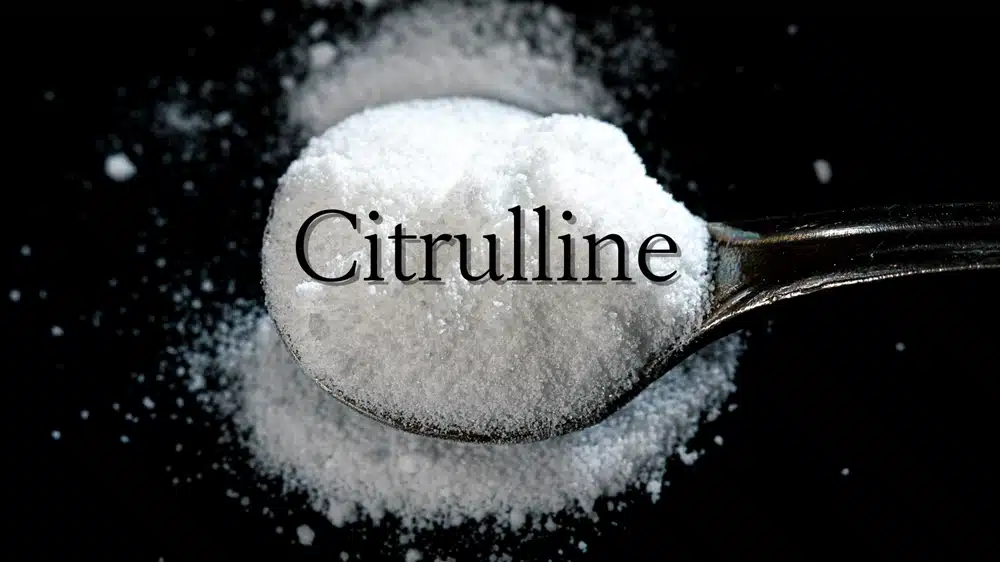L-Citrulline vs Citrulline Malate: Picture you’re standing in the supplement aisle, a bottle of L-Citrulline in one hand and Citrulline Malate in the other, wondering which one’s your ticket to better workouts. Sound familiar? If you’ve ever felt that twinge of confusion, you’re in the right place. These two powerhouses are darlings of the fitness world, loved by gym-goers and athletes alike. But what sets them apart, and how do you know which one’s for you?We’ll explore what they are, their benefits, and how they differ— all with a friendly nudge to help you pick the right one. Whether you’re chasing muscle pumps or longer runs, stick with me, and let’s figure this out together!
What Is Citrulline and Where Does It Come From?

Let’s start at the beginning. Citrullina is an amino acid— one of those tiny building blocks your body uses to keep things running smoothly. Unlike some amino acids that build muscle, citrulline’s job is a bit more behind-the-scenes. It’s a star player in the urea cycle, helping your body flush out ammonia, a pesky waste product. But here’s where it gets exciting: citrulline also boosts nitric oxide, a magic molecule that opens up your blood vessels like a VIP pass, letting more oxygen and nutrients flow to your muscles.
So, where does this wonder come from? You’ll find citrulline in nature, hiding out in watermelons—yep, that juicy summer fruit! In fact, its name comes from the Latin word Citrullus, meaning watermelon. Your body makes some too, in the liver and intestines, but not enough to power through tough workouts. That’s why supplements, often crafted through produzione di nutrizione sportiva, step in. These ingredienti degli integratori alimentari pack a punch, giving you more citrulline than you’d get from munching on fruit all day.
What Are the Benefits of L-Citrulline?
Now that we know what citrulline is, let’s talk about why L-Citrulline has people buzzing. This pure form of the amino acid is like a secret weapon for your workouts. Here’s why:
First off, it’s a nitric oxide booster. When you take L-Citrulline, your body turns it into L-Arginine, which then ramps up nitric oxide production. Better blood flow? Check. More endurance? You bet. Studies show that folks taking 6 grams of L-Citrulline can crank out more reps before exhaustion hits. I tried it once before a heavy lifting session, and honestly, I felt like my muscles were singing—those last few reps didn’t feel like a chore.
It’s not just for gym buffs, though. L-Citrulline might lower blood pressure, giving your heart a little love too. And—brace yourself—some research even hints it could help with erectile dysfunction by improving blood flow where it counts. Plus, it might ease that post-workout ache. One study found it reduced muscle soreness, so you’re not hobbling around the next day.
In a nutshell, L-Citrulline is like a trusty sidekick—always there to help you push harder and recover faster.

L-Citrulline vs. Citrulline Malate: What’s the Difference?
Okay, here’s where the plot thickens. L-Citrulline is awesome, but Citrulline Malate? It’s like L-Citrulline teamed up with a buddy for a power duo. The difference lies in what’s added: malic acid.
L-Citrulline is the pure, unfiltered version of the amino acid. Citrulline Malate, though, combines L-Citrulline with malic acid, a compound you’d find in apples that helps your body churn out energy. Think of L-Citrulline as a solo singer belting out a great tune, while Citrulline Malate is a harmony—same great voice, but with an extra layer of richness.
Malic acid isn’t just along for the ride; it plays a role in the Krebs cycle, the process that fuels your cells with ATP, your body’s energy currency. That’s why Citrulline Malate often shows up in pre-workouts from produzione di polveri pros—it’s not just about blood flow; it’s about keeping you going.
Here’s a quick look at how they stack up:
| Caratteristica | L-Citrullina | Citrullina malato |
|---|---|---|
| What’s in It | Pure amino acid | L-Citrulline + malic acid |
| Main Perk | Boosts blood flow | Blood flow + energy |
| Perfetto per | Muscle pumps | Endurance workouts |
So, while L-Citrulline keeps it simple, Citrulline Malate brings a little extra to the party.
L-Citrulline vs. Citrulline Malate: Which Is Better?
Here’s the big question: which one wins in the L-Citrulline vs. Citrulline Malate debate? Truth is, there’s no universal champ—it’s all about what you need.
If your goal is better muscle pumps or quicker recovery, L-Citrulline might be your go-to. It’s laser-focused on nitric oxide, and research backs it up—6 grams a day can seriously up your game. It’s clean, simple, and gets the job done.
But if you’re into long runs, cycling, or those brutal HIIT sessions, Citrulline Malate could steal the show. That malic acid kicks in to help with energy, and studies suggest it’s a beast for high-intensity performance. One found that 8 grams of Citrulline Malate let people do more reps and feel less wiped out. Another showed it cuts down on soreness, which is a lifesaver after a tough workout.
Me? I lean toward L-Citrulline for lifting days—it’s like a direct line to those swole vibes. But I can see why runners or CrossFit fans might pick Citrulline Malate for that extra stamina. It’s not about one being “better”; it’s about what fits your vibe.
L-Citrulline vs. Citrulline Malate: Which One Should You Take?
Still scratching your head? Let’s break it down with some real-life scenarios:
- Lifting junkie chasing pumps? L-Citrulline’s your match. Take 3-6 grams before hitting the weights, and feel that blood flow kick in.
- Endurance athlete or cardio lover? Citrulline Malate’s got your back. Pop 6-8 grams about 30 minutes before your session for that dual boost.
- Just dipping your toes into supplements? Start with L-Citrulline—it’s straightforward and won’t overwhelm you.
How do you take it? Mix it into water or a shake—formula personalizzata powders make it easy. Timing-wise, 30-60 minutes pre-workout is golden. And quality? Oh, it matters. Look for Soluzioni OEM from trusted produzione di nutrizione sportiva outfits. High-quality ingredienti degli integratori alimentari and solid servizi di imballaggio ensure you’re getting the good stuff.
Not sure what’s best for you? Chat with a doc or trainer—your body’s unique, and they can steer you right.
Domande frequenti
Is it okay to take citrulline malate every day?
Yes, daily use is generally safe for healthy individuals at recommended doses (6-8g). Consult a doctor for long-term use or if you have medical conditions.
How long does it take for L-citrulline to kick in?
Effects on blood flow and exercise performance typically start within 30-60 minutes after a dose, with peak benefits after 1-2 weeks of consistent use.
Who should not take citrulline malate?
Avoid if you have low blood pressure, are on nitrates or blood pressure medications, or have kidney/liver issues without consulting a doctor. Pregnant or breastfeeding women should also avoid it.
Is L-citrulline better than creatine?
Neither is “better”; they serve different purposes. L-citrulline improves blood flow and endurance, while creatine enhances strength and muscle energy. Combining them may be optimal for performance.
Is citrulline malate safe for kidneys?
Generally safe for healthy individuals at recommended doses. Those with kidney disease or impaired kidney function should consult a doctor before use.
Should you take citrulline in the morning or at night?
Take 30-60 minutes before exercise for best results. If not exercising, morning or evening is fine, but morning may align better with daily activity.
What are the bad side effects of L-citrulline?
Rare, but may include stomach upset, diarrhea, or low blood pressure. High doses could cause nausea or heartburn. Discontinue if adverse effects occur.
What is more effective, L-citrulline or L-arginine?
L-citrulline is more effective. It converts to L-arginine in the body, providing longer-lasting nitric oxide boosts with better absorption and fewer side effects.
Is citrulline malate good for muscle growth?
Yes, indirectly. It enhances blood flow, nutrient delivery, and workout performance, which can support muscle growth when combined with resistance training.
Conclusione
So, L-Citrulline vs. Citrulline Malate? It’s less a battle and more a choice. L-Citrulline shines for blood flow and recovery, while Citrulline Malate adds an energy edge for those grueling sessions. Both are stellar aminoacidi that can level up your fitness game.
Now it’s your turn: what’s your next workout goal? Grab the one that fits, and let me know how it goes—I’m rooting for you!
Riferimenti
: Pérez-Guisado, J., & Jakeman, P. M. (2010). Citrulline malate enhances athletic anaerobic performance and relieves muscle soreness. Journal of Strength and Conditioning Research (Giornale della ricerca sulla forza e sul condizionamento).
: Figueroa, A., et al. (2017). L-Citrulline supplementation attenuates blood pressure response. Journal of Hypertension.
: Cormio, L., et al. (2011). Oral L-citrulline improves erection hardness. Urology.
: Bendahan, D., et al. (2002). Citrulline/malate promotes aerobic energy production. British Journal of Sports Medicine.
: Wax, B., et al. (2015). Effects of citrulline-malate on resistance exercise performance. Giornale degli integratori alimentari.
: Glenn, J. M., et al. (2017). Citrulline-malate improves strength in athletes. European Journal of Sport Science.



